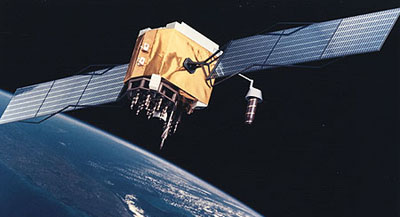Spacepower versus bin Ladenby Taylor Dinerman
|
| One thing is certain: without space-based intelligence the hunt for bin Laden would have taken a lot longer. |
First of all we should praise the men and women who run the spy satellites. The National Reconnaissance Office (NRO) should take a (quiet) bow. The satellites they control were able to pinpoint bin Laden’s mansion and, using their archives of space-derived imagery, they and their colleagues at the National Geospatial Intelligence Agency (NGA) were able to determine when it was built and what many of its special characteristics were.
Satellite surveillance was also an essential adjunct to the on-the-ground work done by the CIA. Space imagery has long been able to confirm or disprove information that comes from human spies. Obviously it is not a perfect way to check on everything that sources say, but it is pretty good. If a spy said that there was an airplane on a particular runway at a particular time and if the evidence from the satellite says otherwise, one can draw conclusions about the reliability of the spy’s other intelligence.
The space-derived information that helped to scope out bin Laden’s hideout was not limited to imagery. The NRO operates a number of listening satellites whose capabilities are among the nation’s most closely guarded secrets. What we do know is that these satellites have huge antennas that have sometimes been photographed from Earth by amateur space watchers.
Just how good the technical data the intelligence community used is classified and will likely remain so for decades. The full story of how America tracked bin Laden may not be known for 20 years, if not longer. One thing is certain: without space-based intelligence the hunt for bin Laden would have taken a lot longer.
The raid by the CIA and the SEALs, transported by Army Special Operations helicopters, was supported by the GPS satellite navigation system. As part of the preparations for the raid the GPS operators probably “tweaked” the orbits of a few of the 30 operational spacecraft in order to improve the accuracy of the system and thus precisely guide the helicopter to their destinations. This guidance was also essential to help the aircraft avoid Pakistani radars, whose locations and transmission characteristics were detected and analyzed with the help of America’s electronic intelligence gathering satellites.
The pictures that the White House released of the president and his team watching the operation unfold from the situation room has raised the question of what they were watching. Indications are that they were looking at imagery from a drone circling overhead, transmitted to Washington via a military communications satellite, but they may have been watching pictures coming directly from small cameras mounted on the troop’s helmets. The secure transmission links that are required for an operation like this may have absorbed the full capability of several US military communications spacecraft.
In 2001 it was said that the video feed from a single Predator drone required the capability of an entire billion-dollar Milstar satellite in order to send images from Afghanistan to Washington. Today, thanks to improvements in the ability of the system to send more data using the same or slightly improved transmitters, the Defense Department did not have to devote all its major communications assets to this one mission. Thus at the same time the SEALs were attacking in Abbottabad, other operations could continue in Afghanistan, Iraq, Yemen, and elsewhere. This is an important sign out just how much America’s military communications systems have improved in the last nine years.
| The secure transmission links that are required for an operation like this may have absorbed the full capability of several US military communications spacecraft. |
The successful raid was the result of decades of hard training and painful operational experience. Special operations were once upon a time characterized by what was called the “selection-destruction cycle”. Units were built up from highly trained and motivated volunteers and were sent on operations of often dubious value in which most, if not all, of the unit was lost. This happened repeatedly in World War Two, notably the British raid in March of 1942 on Saint Nazaire and to the US 1st and 3d Ranger battalions at Anzio in January 1944.
The Desert One fiasco in April 1980 could have lead to the abandonment by America of any future difficult special operations. Instead, it hardened the nation’s will to develop forces capable of carrying out the most difficult missions under the most dangerous of circumstances. The lessons of success are often harder to absorb than the lessons of failure, but one hopes that the administration and the military will look carefully at the unique circumstances that allowed them to pull this operation off. Nothing would be worse than to try and repeat this spectacular feat of arms without the long and careful preparation that went into it.
